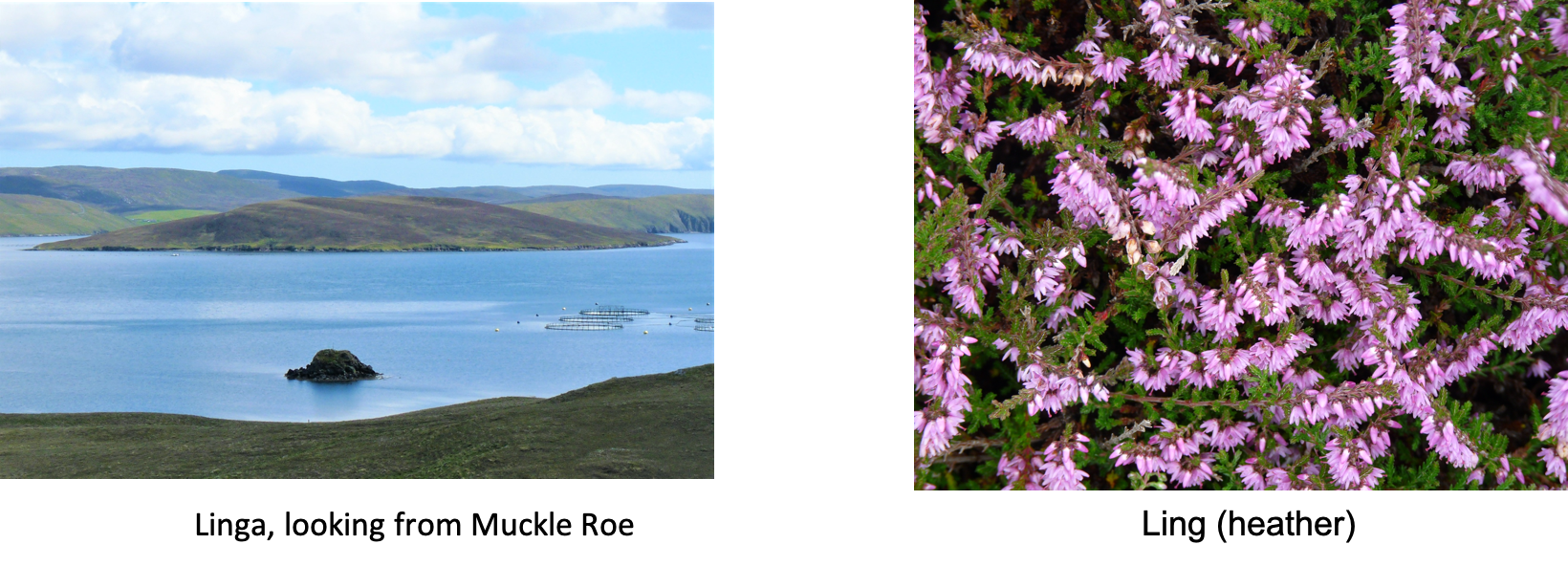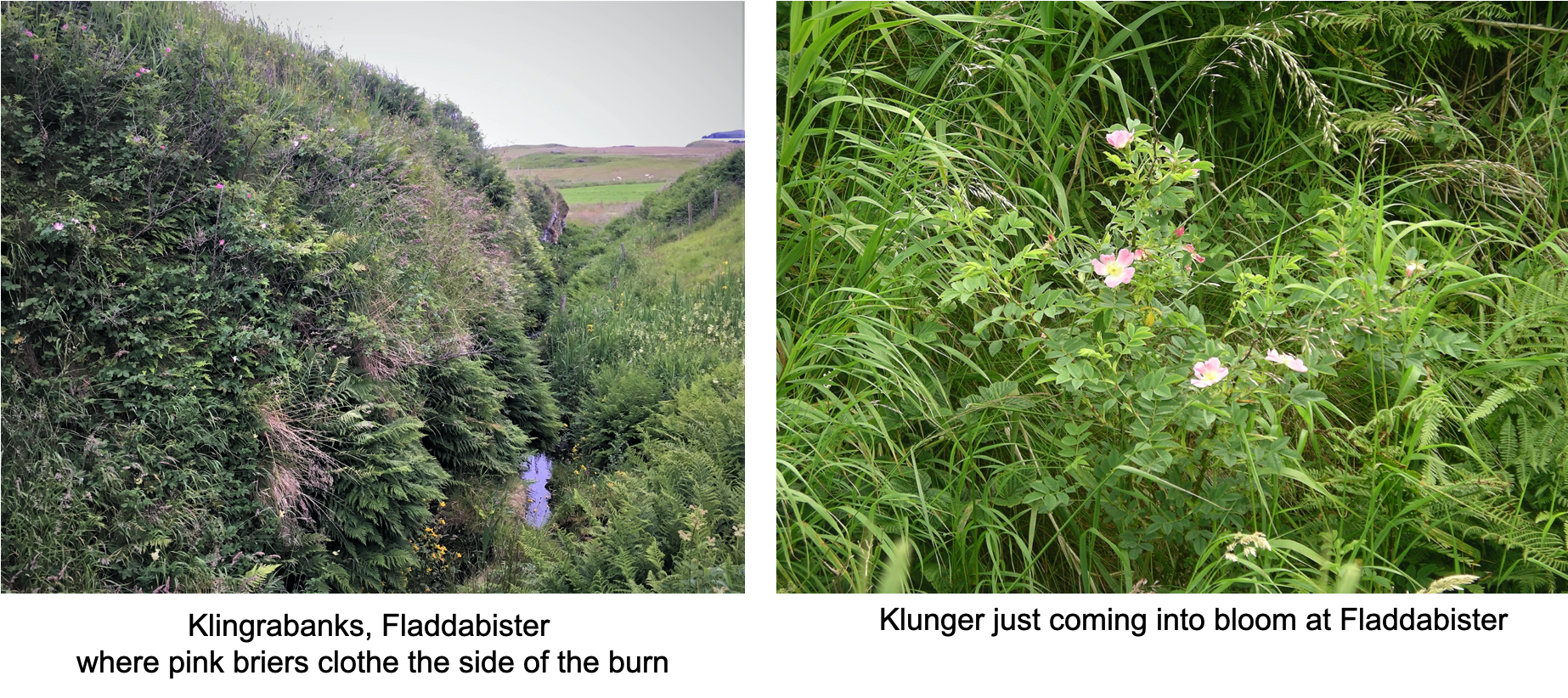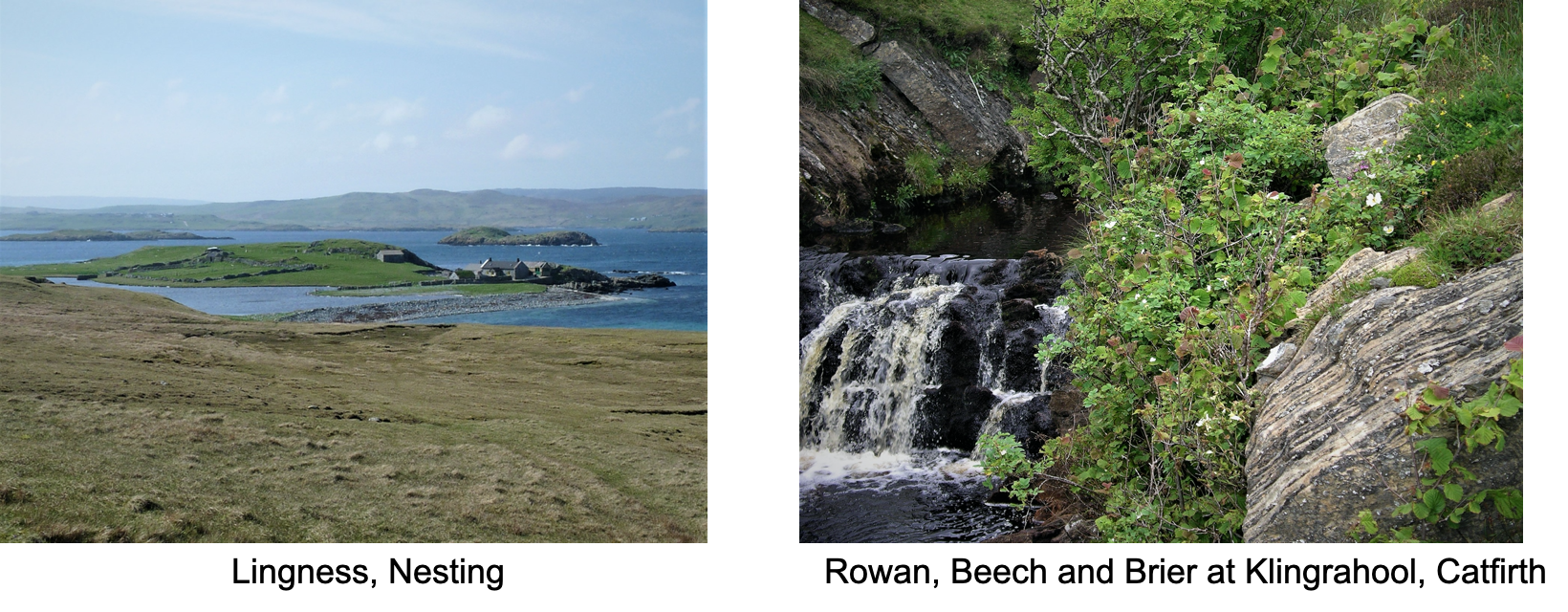Place-name of the week blog – Linga and Klingra
Published: 16 July 2020
Place-name of the week blog – Linga and Klingra
This week it’s been a joy to see both heather and wild roses coming into flower. Both beautiful plants are reflected in several place-names.
Linga
Linga, from Old Norse ling-ey, heather isle, is Shetland’s most common island name with ten examples; all are currently uninhabited, but some of them once housed fishing böds, crofts or even more ancient settlement.
The most northerly is Linga in Bluemull Sound, which features in the story Jan Tait and the Bear. Returned from Norway with a bear, Jan Tait tethered him on the east end of Linga, after the bear had caused havoc on Fetlar. It is said that you can see the circle where the bear went around and round! Urie Lingey lies to the south-west, just off the Ness of Urie in Fetlar. It has the same “ee” pronunciation as nearby Linga. Like several other Lingas, this small isle is frequented by common seals. Delting’s two Lingas lie off Firth Ness, and between Muckle Roe and Grobsness.

On the Westside, there are Lingas near Vementry and Waas, and one amongst the string of peerie isles off Scalloway. Like its larger neighbours, it was once home to families of fishermen –thirteen people were recorded in the two Leask households in 1841. Whalsay has the largest Linga, West Linga on the OS map, sometimes recorded Greater Linga as opposed to the nearby Lesser or Little Linga, often used by fishermen as a source of limpets for bait. East Linga, the largest islet east of Whalsay, once housed haaf fishermen’s lodges, with a fishing station and curing beach on neighbouring Griff Skerry.
Other ling place-names includes include Lingness (heathery headland), Lingarth (farm on the heath), Lingeroo (clearing in the heather), Lunklet (rock on the heath) and Linga Bringa (heathery hill).
Klingra
The Shetland flower name klunger comes directly from Old Norse klungr - brier or wild rose. There are Klingra or Klunger place-names in Unst, Fetlar, Northmavine, Nesting, Whiteness and Fladdabister. A particularly good example, near an access route, is Klingrabanks where the steep sides of the Fladdabister Burn are currently clothed in masses of pale pink briers.

Some klingra names are confusing as some originate in kringla meaning a circle or ring. These can be knowes, rocks or circular pieces of land with the place-name appearing as Ring, Ringla, Rengla, Klingra and or Klinger. Klingrahool near Catfirth is a circular hill, but on approaching the knowe you encounter the distinctive white roses intermingled with the native Rowan and Hazel on the banks of the Burn of Crookdale, suggesting the root word is klungr rather than kringla.
An alternative name for places where brier bushes grow is Da Torrens or Torns, meaning a thorn brier or brier bush; names along the Fetlar coastline at Funzie include Klonger, Kist o Klonger, Hamars o Klonger and Da Torns.
When climatic and land use changes have destroyed evidence of plant species, place-names often point us to where they once existed. In the case of the brier, locations are often quite inaccessible, which may have contributed to their survival. Why not get out and about to see if the plants are in flower at any linga or klingra places near you, and share your photos by emailing placenames@shetlandamenity.org

Eileen Brooke-Freeman, Shetland Place Names expert, June 2020
We hope you have enjoyed this blog.  We rely on the generous support of our funders and supporters to continue our work on behalf of Shetland. Everything we do is about caring for Shetland's outstanding natural and cultural heritage on behalf of the community and for future generations. Donations are welcomed and are essential to our work.
We rely on the generous support of our funders and supporters to continue our work on behalf of Shetland. Everything we do is about caring for Shetland's outstanding natural and cultural heritage on behalf of the community and for future generations. Donations are welcomed and are essential to our work.

